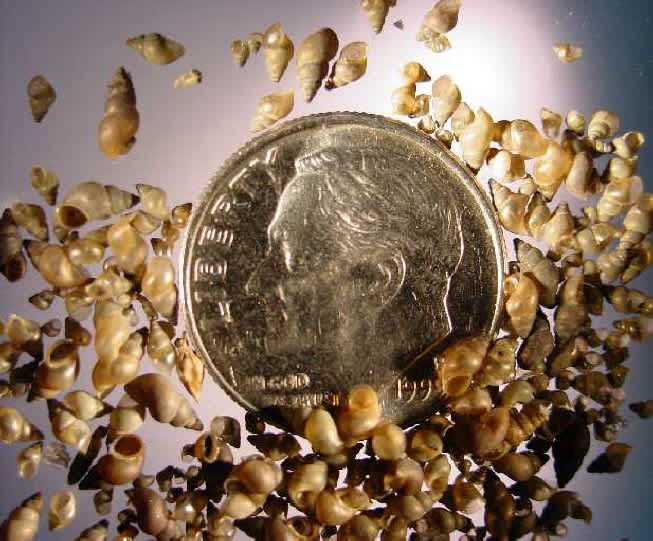Invasive Mudsnail Reaches Wisconsin, Anglers Can Help
OutdoorHub Reporters 04.17.14

The invasive New Zealand mudsnail may look harmless enough, but the true danger lies in how quickly it can multiply. Mudsnail populations can reach a density of 500,000 per square meter, out-competing native snails and insects that fish rely on for food. Although snails have existed in Western US streams for years, the invasive species finally reached Wisconsin’s Black Earth Creek last October.
“We don’t know what the impact will be in Wisconsin, but we do know that there is no good way to eradicate the snails so we are focusing on containing them as quickly as we can and ask for citizens’ help in doing that as well,” said Bob Wakeman, who leads the Department of Natural Resources aquatic invasive species unit.
The small critter is causing widespread concerns among Wisconsin anglers and conservationists, who say the problem should not be understated. New Zealand mudsnails were first discovered in Idaho’s Snake River in 1987. Since then, the species has spread to multiple states and important waterways such as the Great Lakes, Madison River, and Firehole River.
“They’re just extremely resilient,” River Alliance of Wisconsin coordinator Scott Caven told the La Cross Tribune.
Mudsnails can survive up to 24 hours without water and a month and a half on a damp surface. This makes it especially easy for the snail to survive on a boat. Mudsnails have even been documented to pass through the digestive systems of fish and birds relatively unscathed.
“This is a significant and disappointing find in Wisconsin,” Wakeman said.
Needless to say, mudsnails are not good food sources for the majority of Wisconsin’s fish species. While some species such as mountain whitefish do dine readily on the mudsnail, they have difficulty digesting it. The greatest immediate concern in Wisconsin is for the Black Earth Creek, which is a popular trout stream in Dane County. According to a recent study by Spanish researchers, mudsnails can generate up to 230 young per year through asexual reproduction. The most notorious case of a mudsnail invasion occurred in Switzerland’s Lake Zurich, where the species colonized the entire lake in less than seven years with a density of 800,000 individuals per square meter.
However, there are steps that anglers can take to halt the spread of the mudsnail. The DNR advises that anglers clean their clothes, boats, and gear with a stiff brush to remove any mud that might harbor the snails. Freezing your gear for six to eight hours or leaving it dry for five days will also kill off any snails. When moving between streams, consider buying a second set of waders to avoid transferring the snails to a new home. Lastly, anglers should drain water from their boat and gear before leaving access points.
“This is why it’s so important to clean your equipment before leaving a lake or stream—and ask your friends and guests to do the same,” Wakeman said. “We need everyone’s vigilance to help contain this invasive species.”

